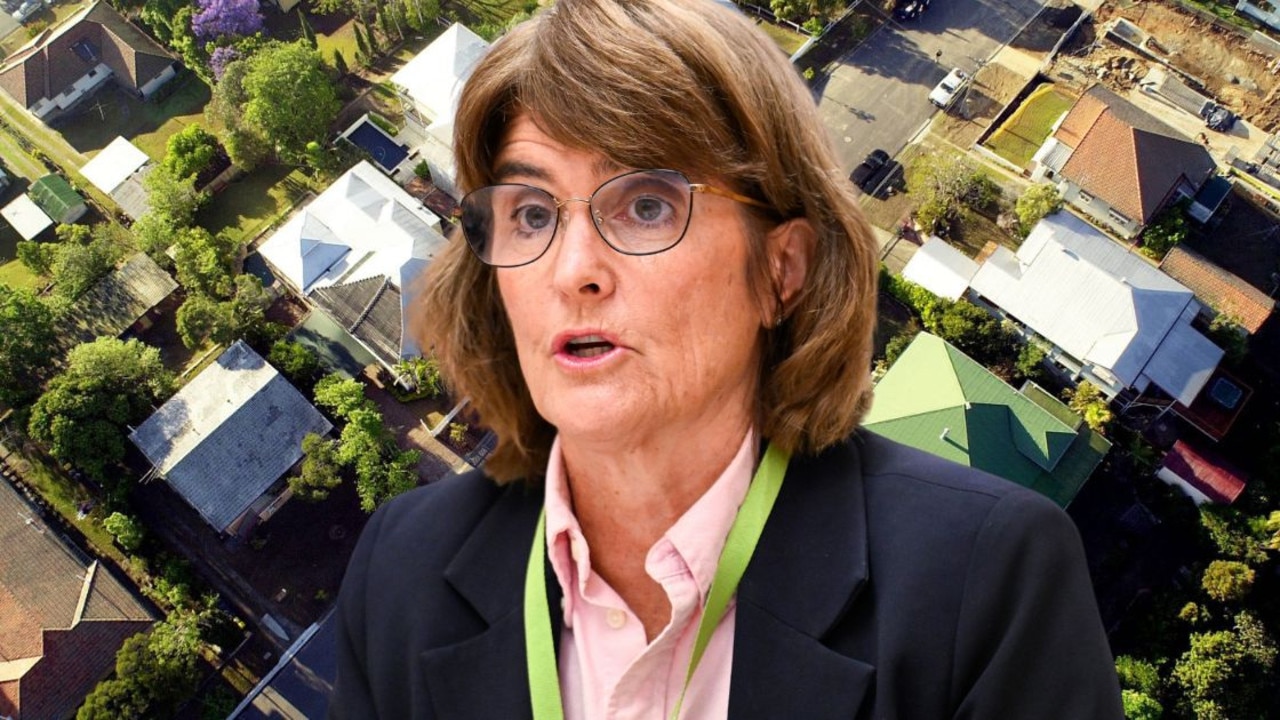Moreton Bay Region goes from strength to strength after amalgamation
COUNCIL amalgamations have been a bone of contention for many, but for one region it has meant becoming a Queensland powerhouse.
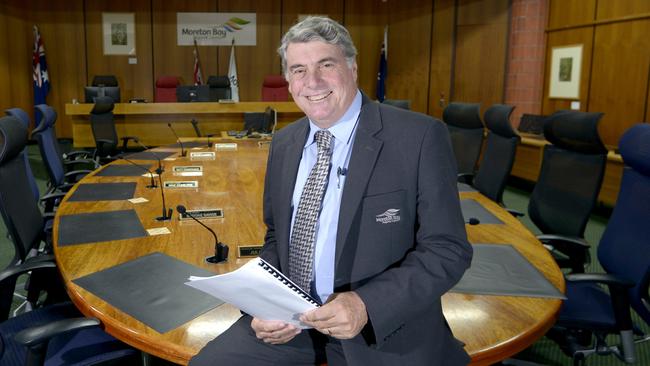
CM Insight
Don't miss out on the headlines from CM Insight. Followed categories will be added to My News.
IN AUGUST 2007, Allan Sutherland pushed a wheelbarrow from his mayoral office on the Redcliffe peninsula to Parliament House, 42km away.
The barrow was piled with petitions containing the signatures of more than 22,000 people who, like Sutherland, were staunchly opposed to State Government plans to amalgamate Redcliffe with neighbouring Caboolture and Pine Rivers councils.
Redcliffe feared its identity as a laid-back bayside fishing “village” – where John Oxley first stepped ashore in 1824 – would be consumed by its civic big brothers.
But Sutherland has changed his mind.
“I have never been so wrong about anything,” he says.
The “shotgun wedding”, as he calls it, gave Redcliffe and the rest of Moreton real clout.
It has financial and political muscle, not just in George Street, but all the way to Canberra.
Operational expenditures were slashed so there was more money for city upgrades, says Sutherland.
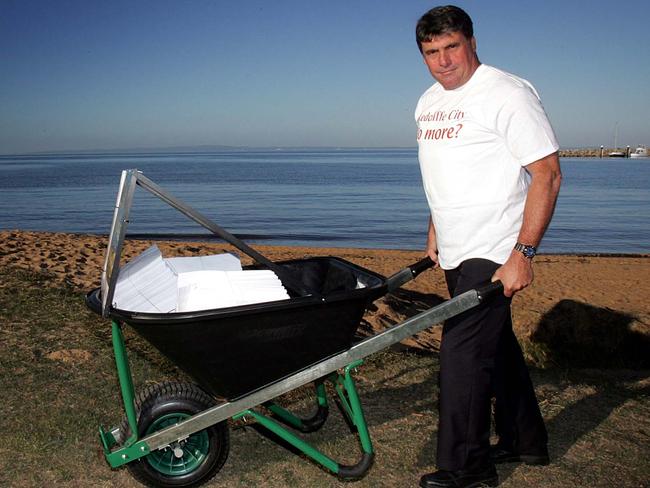
When the amalgamation happened, Sutherland became mayor of Moreton Bay Regional Council. That was 10 years ago this month. A road trip through the region shows the astonishing changes since then. Around every corner there appears to be an excavator carving up the earth for a new housing estate, business park or sports oval.
“There is work for anyone willing to get their hands dirty,” he says.
Although Sutherland opposed the council merger, he thought he could do a better job than the candidates who were emerging to run the new show. He fought and won the election on a platform of unifying Moreton.
Along the way he had to expand his own thinking, he says. As mayor of Redcliffe people phoned him personally to complain about barking dogs and ask why their bins weren’t collected.
When he joined the council in 1994, Brisbane folk were still looking down their noses at Redcliffe, a battlers’ backyard of Hills hoists and dogs.
“They cruelly called us Deadcliffe, or Inala by the sea,” Sutherland says.
The gloom town is now the nation’s boom town.
In 10 years Sutherland has been the driving force behind the $1.02 billion Redcliffe Peninsula rail line, and a new university destined to have a hospital, a research centre and a feeder high school for STEM (science, technology, engineering and maths) students.
Sutherland has also delivered a suite of galleries and sports facilities that would be the envy of any major city.
Along the way the barefoot mayor, who loves fishing, has stood up to prime ministers and premiers who, he says, had neglected Moreton Bay and failed to deliver its fair share of infrastructure.
Sutherland admits that it didn’t happen without a slanging match or two.
Development is rampant. There is not one but three CBDs in Moreton – at Strathpine, Caboolture and North Lakes.
In the past 10 years the population has soared by more than 80,000 to 438,000, and by the end of the next decade Moreton will have more people than Tasmania.
Moreton Bay Regional Council is a microcosm of Australia, with a blue-collar tinge. Demographer Bernard Salt says the biggest industry in the next 10 years will be construction.
There is also an apartment boom; an apartment at Woody Point recently sold for $2 million – a city record.
However, Moreton Bay is more typically a magnet for parents aged 35 to 39 seeking affordable housing and a bayside lifestyle.
It’s the New Queensland.
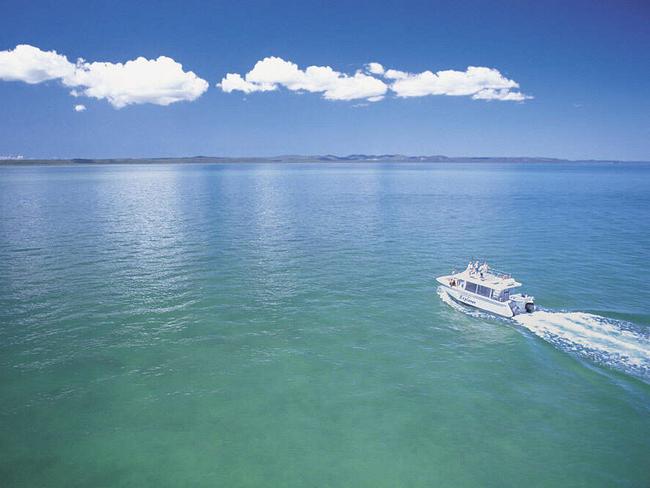
It has also been a political killing field for high-profile incumbents such as Cheryl Kernot, Wyatt Roy, Scott Driscoll and Yvette D’Ath. Ousted from the federal seat of Petrie in 2013, D’Ath entered State Parliament a year later in a by-election as the Member for Redcliffe.
Under the Southeast Queensland Regional Plan, Moreton Bay is required to deliver an additional 88,300 dwellings over the next two decades to meet demand.
Sutherland says the council is on track to meet demand for 4300 new dwellings a year. And it is on track to release another 1670ha of land for business and industry use over the next 25 years.
At the centre of the boom is North Lakes. Just 9km from the Redcliffe beach, it is officially Australia’s fastest-growing suburb.
Parliament was told recently the population of North Lakes jumped from 52,000 to 72,000 in the five years to 2016. North Lakes is home to 900 businesses supporting 7000 jobs.
An architecturally stunning library and community centre known as Corso North Lakes is a centrepiece. It was one of Australia’s first “Five Star Green Star” rated public buildings. It recycles its own water and has more than 550 rooftop solar panels.
Work has begun next door on the $250 million Laguna Project, with an upscale shopping precinct set in gardens with a boutique hotel and an office tower.
Across the road is North Lakes State College, a relic of the Bligh era and an Education Department showpiece. It is full, so another high school is being built down the road at Mango Hill. Sutherland remembers when the area was a pumpkin patch.
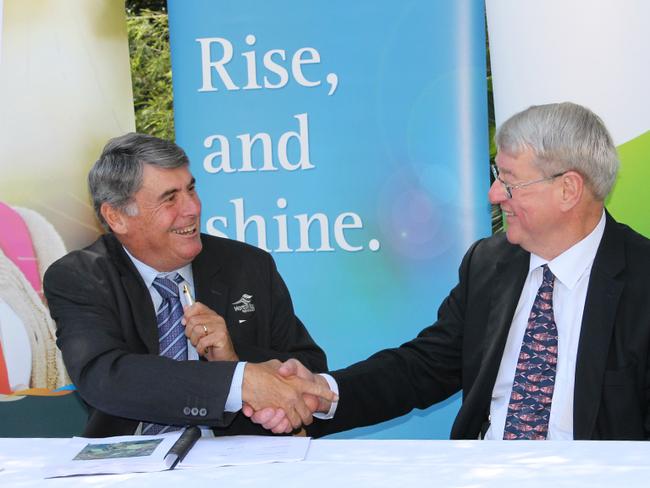
The rail extension that sparked a property “bonanza” would not have happened without amalgamation, he says. The new council was big enough to tip in $108 million to get the project across the line.
And the university would not have happened without the rail and a chance meeting Sutherland had with a ratepayer at a sausage sizzle.
A local man asked him what was to become of the defunct Petrie paper mill. Opened by prime minister Sir Robert Menzies in 1951, it closed in 2013.
Sutherland had been secretly searching for a site for a university and convinced his council to buy the 200ha mill land for $50 million. He then began a five-year battle to win state and federal funding and to find an academic partner.
The Sunshine Coast University says it will accept the first intake of students by 2020. A large koala habitat on the site will be protected.
Vice-Chancellor Professor Greg Hill says the new campus will have 10,000 students within 10 years.
Crucially, the campus is next door to the new Petrie railway station, at the junction of the Petrie and Moreton Bay lines.
New stations at Kallangur, Murrumba Downs, Mango Hill, Mango Hill East, Rothwell and Kippa-Ring will ensure ready access for students and other travellers.
UNI DONS JOIN MILLIONAIRES’ CLUB
WHILE they cry poor about government funding, our university chiefs are becoming multi-millionaires, with soaraway salaries eclipsing $1 million. Peter Coaldrake, the outgoing vice-chancellor of the Queensland University of Technology, led the charge last year. He got between $1,260,000 and $1,269,999, according to documents tabled in Parliament. That was more than the $1.1 million package awarded to Peter Hoj, the University of Queensland’s V-C, or the $1.02 million for Griffith University’s Ian O’Connor. And the professorial millionaires’ club is about to welcome its first female member. Sandra Harding, V-C at James Cook University got up to $989,999. Behind her came Central Queensland University’s Scott Bowman ($825,000-$839,999), the University of the Sunshine Coast’s Greg Hill ($740,000-$750,000), and the University of Southern Queensland’s Geraldine Mackenzie ($630,000-$644,999).
And after reading the annual reports, I’m not clear whether these amounts include bonuses, cars and expense accounts.
CASINO MOVE
LAS Vegas casino and hospitality colossus Caesars Entertainment has secretly met 16 senior State Government figures, prompting speculation that more casinos are planned for Queensland.
Minister for State Development Cameron Dick and Gold Coast Mayor Tom Tate were among those involved in three days of confidential briefings in February by a
firm
representing Caesars.
Interestingly, Commonwealth Games and Queen’s Wharf project directors attended. Caesars is not unknown to the Government. It joined the ASF consortium last year to pitch for rights to operate a casino in a report mooted for the Southport Spit. Is that $3 billion project making a comeback? Caesars operates more than 50 casinos and hotels in six countries.
BUSH FUN
IF YOU haven’t visited the real Queensland for a while, may I suggest you plan an excursion to the Western Downs for the Big Skies festival that begins with the Dalby picnic races on April 28? And from May 2 to 6 there are hot air balloon rides, a food and fibre festival, stargazing tours, and a chance to visit Dalby cattle yards on sales day. A highlight will be the Day on the Plain rock festival at historic Jimbour House on Saturday, May 5 with performances by The Eurogliders, Glenn Shorrock, Joe Camilleri, Wendy Matthews, Richard Clapton and others.
Stay in one of 30 motels or bush pubs. Or you can camp out. Visit website
SEAFOOD FEAST
ALLAN Sutherland, the popular mayor of Moreton Bay Regional Council, doesn’t have to go far for a seafood feast. He hauled in this crab recently from the pot dangling in the water at the rear of his canal-front home at Newport. He told me he got the surprise of his life recently when he hauled in a lobster.
Sutherland has been fishing Moreton Bay since he was a lad. He often threw in a line from Redcliffe pier when he should have been at school, he said.


